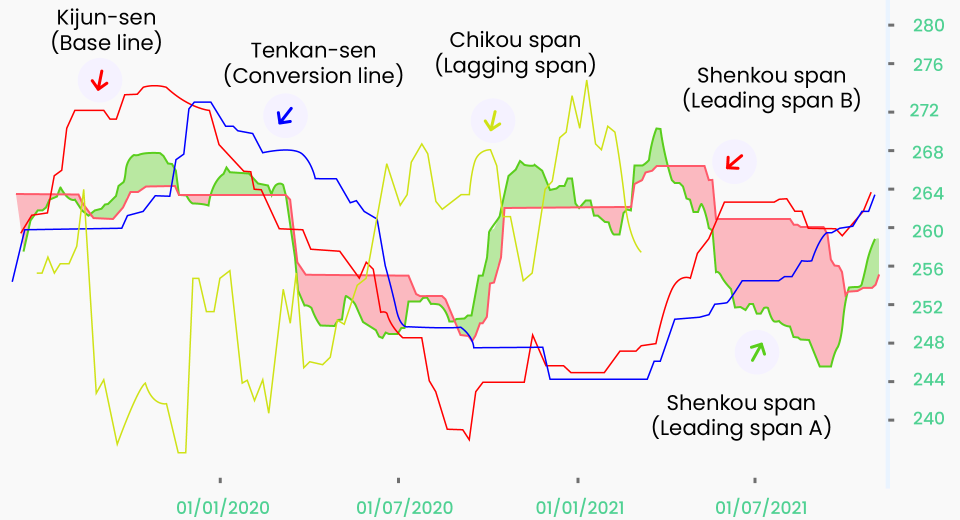Risk management is Rule No. 1 of trading. It involves assessing the level of risk that a trader is comfortable with and then employing techniques to minimise losses so that they do not go beyond the risk tolerance level for a single trade. Popular online trading platforms offer tools to set risk management measures at the time of placing a trade. The most commonly used measures are stop loss, trailing stop loss and take profit levels.
Stop Loss vs. Trailing Stop Loss
While trading a trend, a typical stop loss order ensures that a position is closed if the market moves in an unfavourable direction. A price level is predefined, and the position is automatically closed when the asset price hits this predetermined level.
But what if the market actually trended well for a while and then reversed? You would not be able to capture potential gains with a fixed stop loss level.
This is where trailing stop loss comes to your rescue. Although a trailing stop loss is placed in the same way as a stop loss order, the trailing level moves as the asset price in a favourable direction. This helps you not just limit losses but also lock-in profits.
Usually, a trailing stop loss is placed below the current market price of the asset being traded for a long position and above the current price for a short one.
Why Use Trailing Stop Loss?
The biggest advantage of using trailing stop loss orders is that they allow you to ride the trend while minimising risks and capturing profits, even if the market closes opposite to the trend.
However, there are two things to keep in mind while using stop losses:
- Determining the correct percentage or dollar amount for the stop level. Learning to use indicators appropriately and practising can help with this.
- Determining the market conditions when a trailing stop loss works best. This requires some experience or a study of market movements.
Demo accounts can be extremely useful in learning the intricacies of setting risk management measures without risking real funds.
How to Use Trailing Stop Loss
There are multiple ways to implement a trailing stop loss, such as:
Price-Based Stop Loss
This is the simplest way. You only need to set the price level and the rest is taken care of by the broker.
For example, if you buy a security at $45.60 and place a stop loss of $0.25. This means the position will be closed if the price reaches $45.35. A trailing stop loss will move the stop limit to the most recent high. If the price moved to say $47.80, the new stop loss would be $47.55. This way you might be able to book some profit even if the price later crashes to $45.
Expert Strategy:
To prevent the trailing stop loss from being triggered, you could set a take profit level to exit the position as soon as your profit target is reached. The same can be done in terms of the percentage of the price movement. Here, you could set a percentage, such as 0.08% of the buying price, rather than the exact currency amount.
Manual Trailing Stop Loss
This is a technique used by experienced traders. Although it provides more flexibility, it consumes a lot of energy and requires practice.
In this technique, you observe the price movements and manually reset the stop loss value each time the price moves favourably. The process is not automated. So, alertness and quick decision-making skills are crucial.
Expert Strategy:
Move the stop-loss only after a pullback has occurred, and the price begins to trend again. This technique delays the risk management measure becoming active till a major chunk of the risk has passed and the market is trending favourably again.
Indicator-Based Trailing Stop Loss
The most common indicators used to determine trailing stop-loss limits are volatility indicators. This is a manual technique to act when the indicator suggests so. The average true range (ATR) measures the amount by which an asset typically moves in a given period. Most of the popular trailing stop indicators, such as ATR Trailing Stops and Chandelier Exits, use ATR to determine the stop loss value.
Consider a forex pair that moves 8 pips every 15 minutes. The stop loss cab be trailed at a multiple of the ATR or at 8, 16, or 24 pips. If the price moves in your favour, you can continue to move the stop loss by 8, 16, or 24 pips behind the highest recorded price entry.
Some other technical indicators that can be employed include moving averages and Parabolic SAR.
Expert Strategy:
Some traders prefer putting different stop loss limits for different lots. This helps them minimise risk. Trading requires learning and understanding market moves. Remember that risk can only be minimised, not completely eliminated.
To Sum It Up
- Trailing stop loss helps to protect gains and allow positions to remain open while the market is trending in the trader’s favour.
- Trailing stop loss is a risk management technique that ensures that your winning trades do not turn into losing ones.
- The most crucial part of trailing stop loss is determining where to put the stop.
- Traders may use price-based, manual, or indicator-based stop loss determinants.
- If the market is not trending majorly, trailing stop loss may hamper the trade.
- Use a demo account to develop your trading and stop loss strategy.
Disclaimer:
All data, information and materials are published and provided “as is” solely for informational purposes only, and is not intended nor should be considered, in any way, as investment advice, recommendations, and/or suggestions for performing any actions with financial instruments. The information and opinions presented do not take into account any particular individual’s investment objectives, financial situation or needs, and hence does not constitute as an advice or a recommendation with respect to any investment product. All investors should seek advice from certified financial advisors based on their unique situation before making any investment decisions in accordance to their personal risk appetite. Blackwell Global endeavours to ensure that the information provided is complete and correct, but make no representation as to the actuality, accuracy or completeness of the information. Information, data and opinions may change without notice and Blackwell Global is not obliged to update on the changes. The opinions and views expressed are solely those of the authors and analysts and do not necessarily represent that of Blackwell Global or its management, shareholders, and affiliates. Any projections or views of the market provided may not prove to be accurate. Past performance is not necessarily an indicative of future performance. Blackwell Global assumes no liability for any loss arising directly or indirectly from use of or reliance on such information herein contained. Reproduction of this information, in whole or in part, is not permitted.





